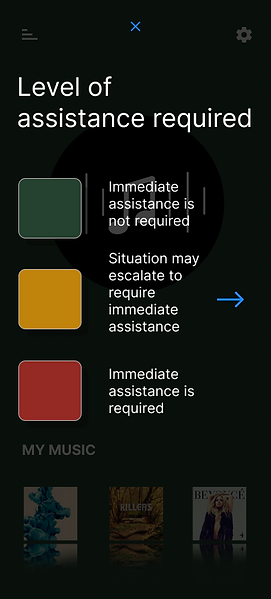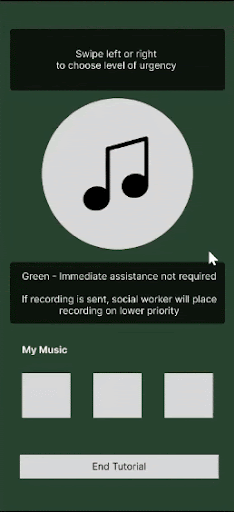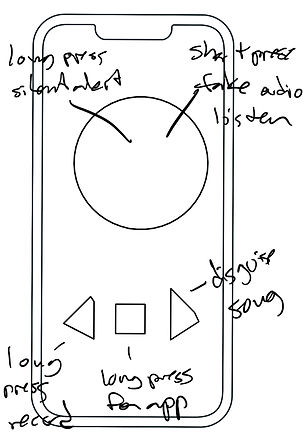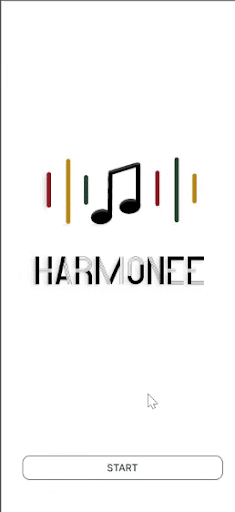




Overview
Over the course of 48 hours, my team and I needed to research, design and iterate an app or website dedicated to a social cause most important to us. Various ideas were suggested, such as animal welfare, and access to clean public restrooms, but neither ideas impacted us as much as domestic abuse and the stigma behind it.
Keep on reading to find out more about Harmonee and our take on domestic abuse assistance.
Role: UI Designer
Timeframe: 2-week sprint
Tools: Figma, Slack, Zoom, Photoshop, Pen and Paper, Figjam
Team members: Elizabeth Wu, Hamdi Abdilahi, Amanda Tang, Jonathan Gonzales
Methodologies: Competitive/Comparative Analysis, Proto Persona Development, Low-Fi to High-Fi Wireframing, Prototyping, User Testing.
WARNING: The following information relayed on this page speaks in detail about domestic violence.
Research
According to the National Coalition Against Domestic Violence:
"1 in 3 women and 1 in 4 men have experienced some form of physical violence by an intimate partner."
"On a typical day, there are more than 20,000 phone calls placed to domestic violence hotlines nationwide."
This number is staggering considering the number of cases unreported and phone calls never placed.
With those numbers in mind, we wanted this app to be as accessible as possible, for both the English speaker, as well as any other person in need, regardless of language.
Another feature we thought would be useful, is to disguise the app as a common application that might exist on most phones, as to not raise suspicion if an abuser would go through the phone.
Comparative and Competitive Analysis
With only 48 hours to complete the project, my team and I discussed what research was most necessary. Surveys might take too long to complete, and interviews might be triggering for a survivor in recovery. We concluded that a Competitor and Comparator Analysis would give us information on what is needed for the person in danger. With apps like Noonlight, Rev Voice Recorder, TapeACall, DocuSAFE, and Aspire News App, we concluded that not all apps have the ability to send help, which is essential for victims in danger.
See the Competitive and Comparative Analysis below:
With an app like Harmonee, an audio recorder with a function to alert a trained team of social workers when assistance is necessary, domestic violence victims could potentially avoid the inevitable and save themselves and others.
Disguised as a music identification app, Harmonee records conversations with a push of a button and just as easily saves and sends the recording to a social worker on stand by if needed. Users can also indicate the level of help they'd require.



Design
Sketches
With our findings, we began brainstorming ideas on how the app should look. We thought of various disguises for the app from a pizza app to a food delivery app, but ultimately we agreed on a music identifying app.
Mid-Fi Wireframes
From the sketches, the Mid-Fi wireframes were developed. Here the team and I focused on the tutorial of the app, where the user not only was able to pick their language of choice, but also be able to indicate to the app where the recordings should be saved.
The next step in the onboarding process, the tutorial part of the app, gave the user a quick and easy explanation of what to expect when using Harmonee.





Usability Testing #1
With our Mid-Fi in place, we conducted our first Usability test with 8 participants. Here's our findings per task:
-
Signing up
-
23 seconds duration
-
100% success rate
-
-
Sending an alert
-
1 minute and 8 seconds duration
-
87.5% success rate
-
-
Save the recording
-
11 seconds duration
-
100% success rate
-
The feedback and data from our first round of user testing, led us to implement the following improvements to our application:
-
Increase contrast between the error box and the main screen.
-
Clarify the wording in the tutorial. The last tap of the sequence was confusing to some testers, so we clarified to reflect what the third tap would do.
-
Incorporation of the color changing feature was introduced.
Usability Testing #2
For our second round of user testing, we had 12 users participate. Here's our findings per task:
-
Tutorial + Send recording
-
54 seconds duration
-
100% success
-
-
Save a recording on green background
-
27 seconds duration
-
100% success
-
-
Slide to red background and send recording
-
27 seconds duration
-
50% success
-
While the first 2 tasks had 100% success, the last task was difficult to complete with a success rate of 50%.
A lot of our feedback was mainly due to the wording of the tasks. Since we did not provide enough context and instructions for the actions, many users were confused on how to use the app whether it be the tutorial or the color feature.
After our second user testing round we implemented the following changes:
-
The color changing feature and its importance to the app was reiterated throughout the tutorial to clear up any confusion.
-
Continued to add to the HI-FI tutorial so the app looks more cohesive.
Style Guide
With all our immediate testing done, I moved on to create a library of colors, text, elements and buttons to help in moving things more smoothly.



Prototype
Onboarding
walkthrough
Tutorial walkthrough
Record
Save
Send



Reflections
Over the course of 48 hours, my team and I completed a comparative and competitive analysis, conducted two rounds of usability testing, iterated designs and most importantly, created an app that would make a difference. Harmonee was created for those who struggle to receive the help they need, inconspicuously and quickly.
Not only did I learn how crucial the right type of research is throughout the process, but also gained a new appreciation for the work that goes in to creating a beautiful, sustainable and easy to use application.
I was able to reflect on how important it is to create a safe environment for those affected by domestic violence and the importance of asking the right empathetic questions.
Next Steps
Given more time, the Harmonee team would like to implement:
-
More research driven features. By asking the right questions with a wide range of factors like different genders, situations, demographics etc., we hope to uncover more information as to what the app will need in the future.
-
An SOS feature where the victim could communicate inconspicuously with help, either a social worker or police.
-
Improve the look of the app and test as needed.
